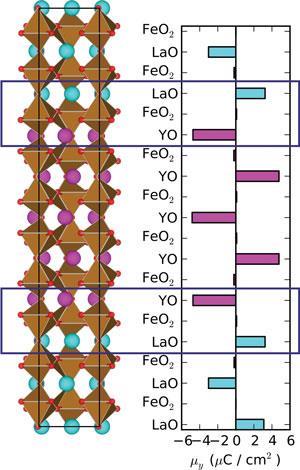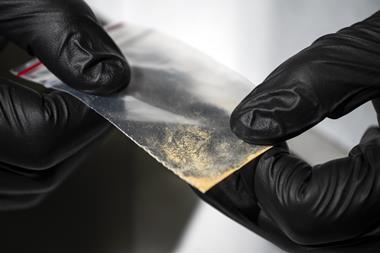
New data storage techniques are in demand to meet the ever-increasing use of digital information. Present methods rely on the writing and reading of computer bits by electricity, and require a high electrical current. This generates heat so the amount of data that can be stored on a drive is limited by how efficiently the device can be cooled.
One possible solution is to read the bits electronically but write them magnetically, thereby removing the need for high electrical currents and cooling mechanisms. This method requires a material in which the electrical polarisation can be controlled by changing the magnetic field, but so far no such materials have been discovered.
A crucial first step is to find materials that can display both electrical polarisation and magnetisation at the same time, known as multiferroic materials. Multiferroic materials are challenging to make as there is often competition between their electronic structure requirements, which give rise to each property, and they also have strict symmetry conditions for the overall crystal structure of the material, which must be fulfilled.
Electrical polarisation is impossible in materials with a centre of inversion, so breaking the inversion symmetry of the material is crucial for electrical polarisation to occur. As this is a very common property of many materials’ crystal structures, this limits the number of potential compounds capable of showing multiferroic behaviour, and remains a barrier to the possibility of magnetic data writing.
However, the new approach described by Matthew Rosseinsky, from the University of Liverpool in the UK, and colleagues, side-steps this problem by showing how two centrosymmetric perovskite materials can be combined in such a way as to break the inversion symmetry of the whole material. Depositing alternating layers of yttrium iron oxide (YFeO3) and lanthanum iron oxide (LaFeO3) using a laser produces a larger heterostructure in which the alternating layers of Y3+ and La3+ cations combine with the tilting of the FeO6 octahedra to remove the centre of inversion symmetry.
The resulting material has the desired piezoelectric and ferromagnetic properties, and raises the possibility of forming a new class of polarisable and magnetic compounds in this way. ‘Layered deposition is important in order to control the distribution of the yttrium and lanthanum cations,’ says Rosseinsky. ‘A conventional solid-state chemical reaction would produce a random distribution, which would not display the required properties’.
Paolo Radaelli, who researches the electronic properties of transition metal oxides at the University of Oxford, UK, agrees: ‘This is a very important result. Engineering materials by stacking two or more phases in a pattern that breaks the centre of inversion is an extremely promising route towards room temperature, robust multiferroic behaviour’.
The team is now looking to expand the technique to other perovskite materials.
References
This paper is free to access until 25th March 2014. Download it here:









No comments yet